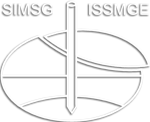Reducing the environmental impact of soil cement stabilization using fine powder generated during crushing waste concrete with carbon dioxide fixed
Reducing the environmental impact of soil cement stabilization using fine powder generated during crushing waste concrete with carbon dioxide fixed
Recently, reduction of CO2 emissions is required as a countermeasure against global warming, and in the field of geotechnics, decarbonization is additionally required because a significant amount of cement is consumed during soil stabilization, which emits a considerable amount of CO2. In this study, to reduce the environmental impact of soil cement stabilization, a new soil stabilizer, which comprises of cement and carbonated recycled concrete fines (RCFs) was introduced. RCFs contain cement hydrate, which reacts with CO2 and transforms into calcium carbonate; hence, they can be used as a carbon capture and utilization (CCU) material. RCFs were carbonated in dry and wet condition to be formed into a CCU material. The amount of CO2 fixed in the RCFs was investigated via thermogravimetry differential thermal analysis (TG/DTA). To clarify the changes in the amounts and types of hydrates in the RCFs before and after carbonation, X-ray diffraction (XRD) analyses for uncarbonated, wet carbonated, and dry carbonated RCFs were conducted. In addition, to investigate the applicability of carbonated RCFs for soil stabilization, test specimens mixed with sand, clay, cement, and CO2-fixed RCFs simulating soilcement column were prepared. To confirm the change in strength properties of soilcement columns due to the addition of RCFs, unconfined compressive tests, XRD analyses, and mercuryintrusion porosimetry tests are conducted. Additionally, hexavalent chromium dissolution tests are conducted. TG/DTA showed that approximately 10% of CO2 by mass can be fixed in RCFs by the abovementioned two carbonation methods. The XRD analysis for RCFs indicated that carbonated RCFs did not contain cement hydrates. The compressive strengths of the specimens containing dry carbonated RCFs were 1.15 to 1.52 times higher, whereas those containing wet carbonated RCFs were 1.16 to 1.46 times higher than those without powder. This seems to be attributable to the difference in the composition of hydrate in the soilcement columns. Mercury intrusion porosimetry test suggested that specimens with RCFs had fewer pores with a diameter of 0.05 to 0.5 µm than specimens without RCFs owing to the formation of hydrates. An XRD analysis of soilcement column specimens showed that the peak of ettringite, which is a hydrate enhancing the initial strength, was detected in only the specimens containing uncarbonated and carbonated RCFs. Alternatively, calcium hydroxide which does not contribute to initial strength was detected in specimens without RCFs. The hydrate was not detected in carbonated RCFs; hence, it was assumed that other hydrates were generated by the hydration reaction in the soilcement column. These characteristics were seen regardless of the carbonation methods. In addition, dissolution of hexavalent chromium in all specimens is less than 0.01 mg/L, which is lower than the environmental standard of Japan (0.05 mg/L). From these tests results, we concluded that fine powder generated during the recycling waste concrete process with CO2 fixed can be used as an environmentally friendly soil stabilizer.
S. Nishiie; T. Kono; M. Sugimoto
9th International Congress on Environmental Geotechnics (ICEG2023)
Advances in Testing and Material Characterization
https://doi.org/10.53243/ICEG2023-173
